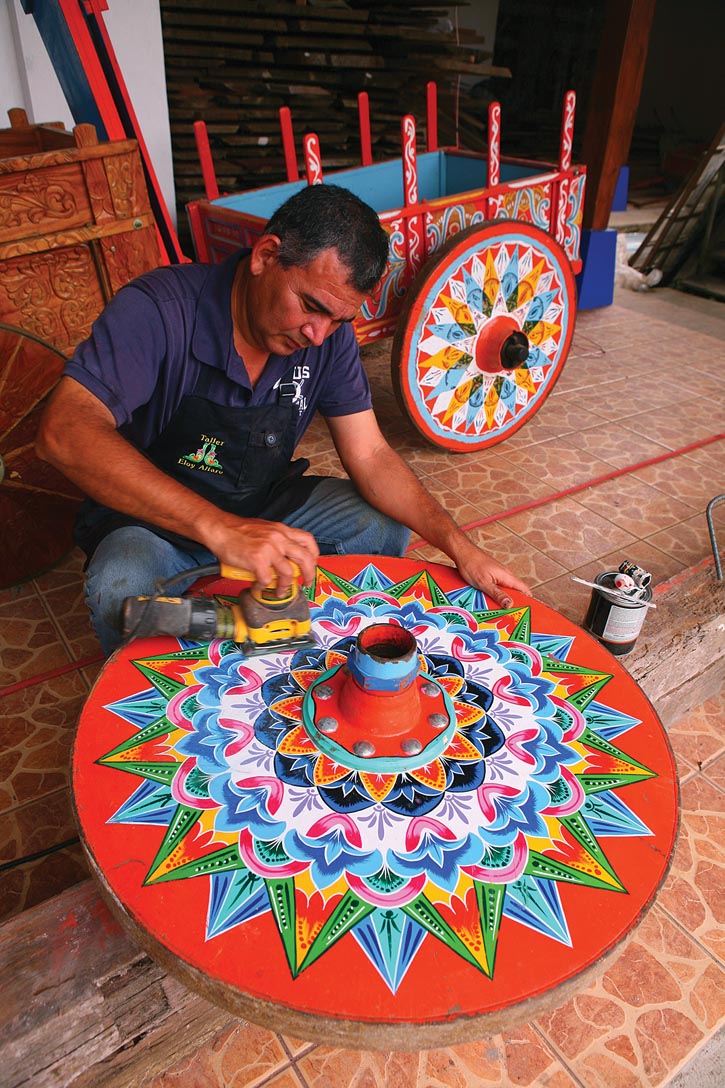Sarchí is famous as the home of gaily decorated wooden carretas (oxcarts), the internationally recognized symbol of Costa Rica. The carts once dominated the rural landscape of the Central Highlands when, at the height of the coffee boom and before the construction of the Atlantic Railroad, oxcarts were used to transport coffee beans to Puntarenas, on the Pacific coast. In their heyday, some 10,000 cumbersome, squeaking carretas had a dynamic impact on the local economy, spawning highway guards, smithies, inns, teamsters, and crews to maintain the roads.
Carretas thus featured spokeless wheels to cut through the mud without becoming bogged downIn the rainy season, the oxcart trail became a quagmire. Carretas thus featured spokeless wheels to cut through the mud without becoming bogged down. Today’s carretas bear little resemblance to the original rough-hewn, cane-framed vehicles. Even then, though, the compact wheels—about 120-150 centimeters (4-5 feet) in diameter—were natural canvases awaiting an artist. Enter Trinidad Arguedaz Saens, the wife of Fructuoso Barrantes (a cart maker in San Ramón), with a paintbrush and a novel idea. She enlivened her husband’s cart wheels with a geometric starburst design in bright colors set off by black and white. Soon every farmer in the district had given his aged carreta a lively new image.
An artisan working on an oxcart wheel, Fábrica de Carretas Eloy Alfaro, Sarchí. Photo © Christopher P. Baker.
By 1915 flowers had bloomed beside the pointed stars. Faces and even miniature landscapes soon appeared. And annual contests (still held today) were arranged to reward the most creative artists. The carretas had ceased to be purely functional. Each cart was also designed to make its own “song,” a chime produced by a metal ring striking the hub nut of the wheel as the cart bumped along. Once the oxcart had become a source of individual pride, greater care was taken in their construction, and the best-quality woods were selected to make the best sounds.
The carretas, forced from the fields by the advent of tractors and trucks, are almost purely decorative now, but the craft and the art form live on in Sarchí, where artisans still apply their masterly touch at two fábricas de carretas (workshops), which are open to view. A finely made reproduction oxcart can cost up to $5,000.
Excerpted from the Tenth Edition of Moon Costa Rica.